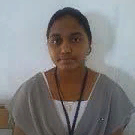International Journal of Image, Graphics and Signal Processing (IJIGSP)
IJIGSP Vol. 4, No. 4, 8 May 2012
Cover page and Table of Contents: PDF (size: 488KB)
A New Video Compression Method using DCT/DWT and SPIHT based on Accordion Representation
Full Text (PDF, 488KB), PP.28-34
Views: 0 Downloads: 0
Author(s)
Index Terms
Video Compression, SPIHT, 3D to 2D transformation, Accordion
Abstract
As a rule, a video signal has high temporal redundancies due to the high correlation between successive frames. This redundancy has not been deflated enough by current video compression techniques. In this paper, we present a new video compression technique which tends to hard exploit the relevant temporal redundancy in the video to improve solidity efficiency with minimum processing complexity. It includes 3D (Three Dimension) to 2D (Three Dimension) transformation of the video that allows exploring the temporal redundancy of the video using 2D transforms and avoiding the computationally demanding motion recompense step. This transformation converts the spatial and temporal correlation of the video signal into a high spatial correlation. Indeed, this technique transforms each group of pictures into one picture eventually with high spatial correlation. SPIHT (Set Partitioning in Hierarchical Trees) exploits the properties of the wavelet-transformed images to increase its efficiency. Thus, the De-correlation of the resulting pictures by the DWT (Discrete Wavelet Transform) makes efficient energy compaction, and therefore produces a high video compression ratio. Many experimental tests had been conducted to prove the technique efficiency especially in high bit rate and with slow motion video.
Cite This Paper
Jaya Krishna Sunkara,E Navaneethasagari,D Pradeep,E Naga Chaithanya,D Pavani,D V Sai Sudhee,"A New Video Compression Method using DCT/DWT and SPIHT based on Accordion Representation", IJIGSP, vol.4, no.4, pp.28-34, 2012. DOI: 10.5815/ijigsp.2012.04.04
Reference
[1]E. Q. L. X. Zhou and Y. Chen, “Implementation of h.264 decoder on general purpose processors with media instructions,” in SPIE Conf. on Image and Video Communications and Processing, (Santa Clara, CA), pp. 224.235, Jan 2003.
[2]M. B. T. Q. N. A. Molino, F. Vacca, “Low complexity video codec for mobile video conferencing,” in Eur. Signal Processing Conf. (EUSIPCO), (Vienna, Austria), pp. 665.668, Sept 2004.
[3]S. B. Gokturk and A. M. Aaron, “Applying 3d techniques to video for compression”, in Digital Video Processing (EE392J) Projects Winter Quarter, 2002.
[4]T. Fryza, Compression of Video Signals by 3D-DCT Transform. Diploma thesis, Institute of Radio Electronics, FEKT Brno University of Technology, Czech Republic, 2002.
[5]G. M.P. Servais, “Video Compression using the three dimensional discrete cosine transform” in Proc. COMSIG, pp. 27.32, 1997.
[6]R. A.Burg, “A 3d-dct real-time video compression system for low complexity single chip vlsi implementation,” in the Mobile Multimedia Conf. (MoMuC), 2000.
[7]A. N. N. T. R. K.R., “Discrete cosine transforms,” in IEEE transactions on computing, pp. 90.93, 1974.
[8]T.Fryza and S.Hanus, “Video signals transparency in consequence of 3d-dct transform,” in Radioelektronika 2003 Conference Proceedings, (Brno,Czech Republic), pp. 127.130, 2003.
[9]N. Boinovi and J. Konrad, “Motion analysis in 3d dct domain and its application to video coding,” vol. 20, pp. 510.528, 2005.
[10]E. Y. Lam and J. W. Goodman, “A mathematical analysis of the dct coefficient distributions for images,” vol. 9, pp. 1661.1666, 2000.





